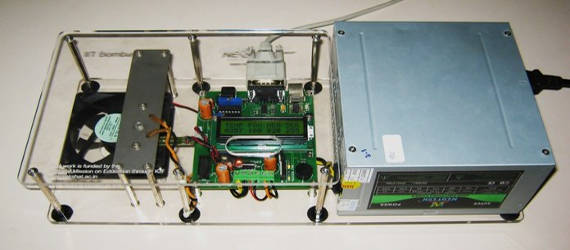-
Notifications
You must be signed in to change notification settings - Fork 0
Home
The Virtual Labs Project was started as an initiative from the Ministry of Human Resource and Development (MHRD) to create online interactive media which would help students learn and experiment with difficult concepts in various domains. As a part of this initiative, a virtual laboratory for Single Board Heater System (SBHS) has been developed. The objective of this lab is to help students, teachers or in general enthusiasts perform experiments in the Instrumentation and Control System labs virtually, and yet have close to real life experience. The platform is focused on learning aspects as much as on performing the experiments.
Visit the SBHS virtual lab here: SBHS Virtual Lab
In these Virtual Labs, the actual experiments are triggered remotely, without requiring physical presence near the equipment. The output of the experiment (being conducted remotely) is communicated back to the student over the Internet. This class of Virtual Labs, gives the student the output of real-time experiments, instead of a pure simulation which can, at best, mimic an actual experiment. These are intermediate between a physical experiment and a virtual simulation.
The single board heater system, abbreviated as SBHS (Single Board Heater System) is a lab-in-a-box setup useful for teaching and learning control systems. It consists of a heater assembly, fan, temperature sensor, ATmega16 micro-controller and associated circuitry. A stainless steel blade whose temperature has to be controlled serves as the plant. Nichrome helical coil with 20 turns kept at a small distance from the steel blade, acts as the heater element. AD590, a monolithic integrated circuit temperature transducer, is soldered beneath the steel plate. A computer fan, a low cost and commercially of the shelf component, is used to cool the plate from below.
- Small and Portable
- Low Cost (Pricing varies with the manufacturer)
- Real Temperature processing
- Easy connectivity to system
- Open-sourced firmware
- Available under virtual labs project
The aim of the FOSSEE project is to eliminate the use of proprietary/commercial software packages in Science and Engineering Education across India and replace them with Free and Open Source Software (FOSS). The shift to FOSS packages will save the educational institutions huge amounts of money. Students trained to use the state-of-the-art FOSS packages will be able to give their prospective employers a huge benefit: especially for small and medium sized companies. FOSS will immensely help the students who wish to become entrepreneurs.
The current software architecture of the virtual SBHS control lab is shown above. The server computer runs Ubuntu Linux 12.04.2 OS. It hosts a Apache-MySQL server. The SBHS server is based on Python-Django framework and is linked to Apache server using Apache’s WSGI module. The MySQL database server has the details of all the registered users, their slot details, authentication keys to allow remote access, etc.The Python-Django server has pages for registration, login, slot booking etc. On the client end, control algorithms are running in Scilab and a python based client application communicates with virtual labs server over the Internet.
The idea is to use ICT i.e. Information and Communications Technology, mainly the Internet, for imparting education or exchange of educational information. Various experimental set-ups are hooked up to the Internet and made available to use for the external world. Hence, anybody can connect to that equipment over the Internet and carry out various experiments pertaining to it. The beauty of this idea is that colleges who cannot afford a few experimental equipments can still provide laboratory support to their students through virtual labs, only requiring a decent Internet connection. Moreover, the laboratory work does not remain restricted to college hours, as one can always use the virtual lab at any time and at any place given the availability of an Internet connection. The concept of virtual laboratory, to which this setup adheres to, is a brilliant step towards strengthening the education system of an university, a college, a metropolitan area or even an entire nation.

